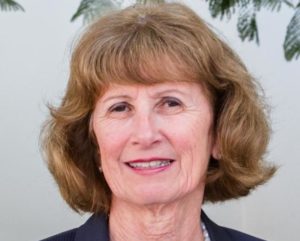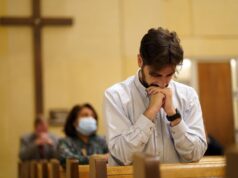
WASHINGTON — An essay by Kathleen McChesney on the impact of the U.S. bishops’ Charter for the Protection of Children and Young People drew a sharp rebuke by the executive director of the Survivor’s Network of Those Abused by Priests.
Zach Hiner, the group’s director, said the steps outlined in the charter “needed to be taken,” but he likened McChesney’s essay to “patting oneself for winning the marathon when you’re only a mile in.”
Hiner, in a Jan. 10 phone interview with Catholic News Service, said “delayed disclosure” of abuse is “a fact.” He noted that “most people in the United States do not come forward until their 50s,” so anyone abused in the past 20 years “would not likely be coming forward until 2030, 2040.”
The essay by McChesney, the first person to head the U.S. bishops’ Office for Child and Youth Protection, was published Jan. 5 by America Media, one day before the 20th anniversary of the first in a series of Boston Globe reports on clergy sex abuse and cover-up.
“I am often asked whether the church is a safer place for minors who participate in Catholic ministries than it was before 2002,” McChesney said. “The answer is yes. But that is not a reason to let our guard down.”
McChesney added: “Since 2002, we have learned much more about sexual abuse by Catholic clergy, particularly as a result of the charter-required studies conducted by the John Jay College of Criminal Justice regarding incidents that occurred between the years of 1950 and 2002. This body of knowledge has become a resource for preventing abuse in the church and other organizations that serve young and vulnerable populations.”

While the charter, approved by the U.S. bishops in the spring of 2002 in Dallas, “was no magic bullet,” McChesney said, “the charter’s programs, such as mandatory screening of candidates for ordination, abuse-awareness training and the removal of men from ministry who had committed even one act of abuse, were successful in significantly reducing the number of abuse cases.”
Hiner took issue with that assertion. “There is not a valid diagnostic tool” to identify abusers, although many have tried to come up with one, he told CNS. “To say, ‘We’ve done such a good job screening pedophiles;’ how can you prove that? It’s the kind of rah-rah statement that doesn’t stand up to scrutiny.”
If the charter represents “first steps” by the bishops, Hiner suggested next steps. He said he is “critical of things like this” because he is “constantly pushing for better.”
One such step would be “making sure every diocese is in full compliance” with the charter, Hiner said, noting that some dioceses have not fully complied with the charter yet have faced no sanction.
Another step would be for each diocese to publish a list of those clergy credibly accused of abuse. “There’s no question,” he said, that “having this information in the public makes people safer,” singling out the Archdiocese of San Francisco and the Archdiocese for the Military Services for not publishing lists.
Over the past 20 years, there has been “an awareness, a change in culture that is evolutionary in process,” said Deacon Bernie Nojadera, current director of the Office of Child and Youth Protection.
“We’re noticing changes in language and in practice. You can’t go into any parish and minister to young people or those who are vulnerable without going through an interview process and filling out a form and going through background checks and safe environment training.”
Deacon Nojadera told CNS in a Jan. 11 phone interview: “I don’t think we will ever be finished with this work. There will always be issues that the church should have to be dealing with, society will have to be dealing with: abuse, harassment, injustice.”
He also noted that outreach, victim assistance and safe environment are terms that were not commonplace 20 years ago.
In the next 20 years, he said the evolution will continue in the church’s education and theological circles. “Canon law has already changed,” he noted.
“I could easily see an evolution permeating to all departments of a diocesan chancery,” as well as the U.S. Conference of Catholic Bishops itself, Deacon Nojadera said, in which all areas of the church “have a hand in and awareness of the issue of abuse, power differentials, harassment and they would be able to contribute to the changes that are needed in order for us to really and truly carry out that pledge that was made to protect and to heal.”
Hiner pointed out that “people who have been abused, and not just in the church, read stories about abuse. Anyone who reads a story and has been hurt by a parent, a clergy member, a coach, whatever, call us (or) call RAINN (the Rape, Abuse & Incest National Network).”
“I hope you come forward,” he added. “I hope you find the encouragement and strength to do so.”







